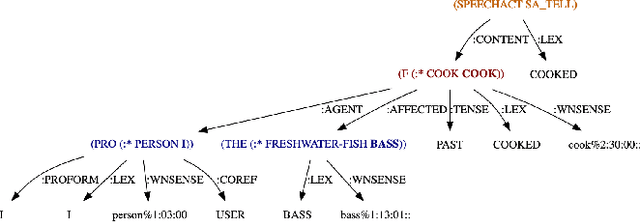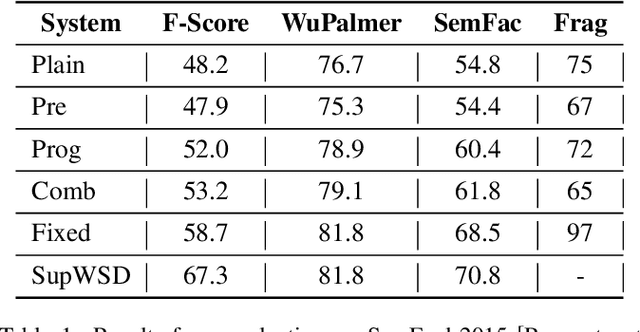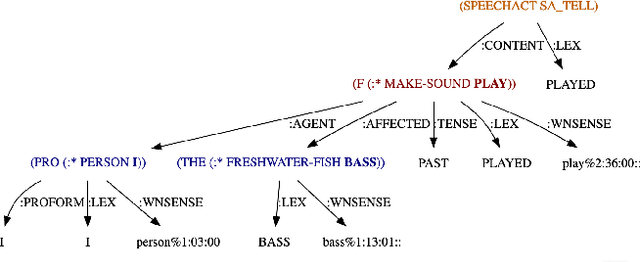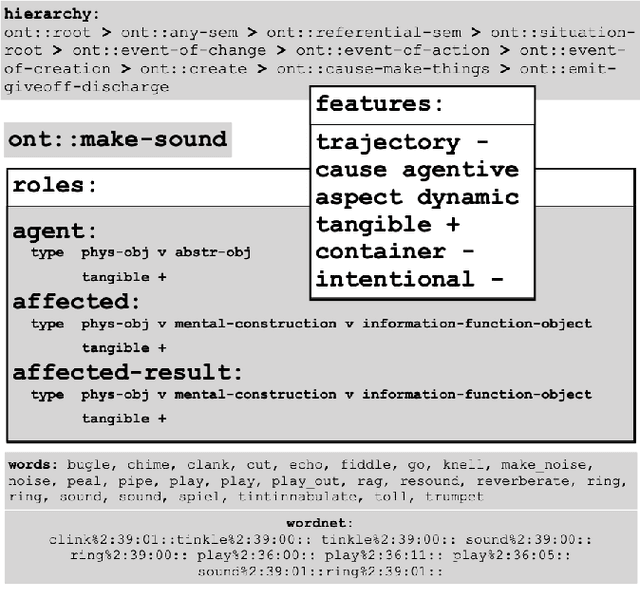Hinting Semantic Parsing with Statistical Word Sense Disambiguation
Paper and Code
Jul 06, 2020



The task of Semantic Parsing can be approximated as a transformation of an utterance into a logical form graph where edges represent semantic roles and nodes represent word senses. The resulting representation should be capture the meaning of the utterance and be suitable for reasoning. Word senses and semantic roles are interdependent, meaning errors in assigning word senses can cause errors in assigning semantic roles and vice versa. While statistical approaches to word sense disambiguation outperform logical, rule-based semantic parsers for raw word sense assignment, these statistical word sense disambiguation systems do not produce the rich role structure or detailed semantic representation of the input. In this work, we provide hints from a statistical WSD system to guide a logical semantic parser to produce better semantic type assignments while maintaining the soundness of the resulting logical forms. We observe an improvement of up to 10.5% in F-score, however we find that this improvement comes at a cost to the structural integrity of the parse
 Add to Chrome
Add to Chrome Add to Firefox
Add to Firefox Add to Edge
Add to Edge